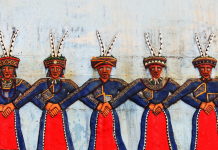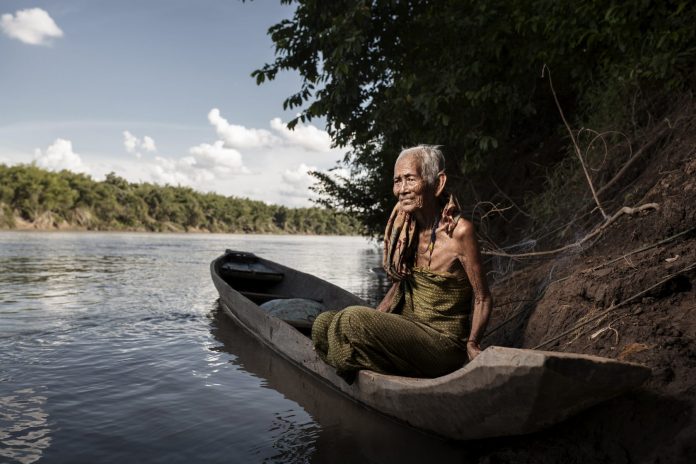
How China’s race for hydroelectric power is displacing thousands in Cambodia
By Giorgio Taraschi
It’s late afternoon and until a few months ago the wooden canoe would not have been there. The men from the village would have used it to go fishing but this has not been happening for a long time now. Children play in the river, lulled by its current, unaware that these will be their last carefree games in the waters that for generations have welcomed and fed the people of Kbal Romeas.
The Fate of Kbal Romeas
Like that of many other nearby villages, the fate of Kbal Romeas is already sealed. Less than a hundred kilometres west, the thump of jackhammers and the roar of sand-loaded trucks pierce through the air. A dam is being built, followed by a big deal of controversy and, very soon, by a water reservoir half the size of Singapore.
In recent years, China’s enthusiasm for dam building has spilled over into Southeast Asia. Hydrolancang – a Chinese state-owned enterprise already responsible for no less than seven out of 28 dams in the upper Mekong region – began to construct its very first overseas hydroelectric project in 2013, the Lower Sesan 2 (LSS2) Dam in Stung Treng province of northern Cambodia.
The $800 million project, located about 100 kilometres south from the border with Laos, has been among the most controversial and destructive ones to be developed in recent years. Once completed, it will block the Sesan and Srepok rivers – two of the main tributaries of the Mekong – creating a 360 square kilometres reservoir while also flooding several villages and displacing thousands of people who have been living along the river banks for generations and who rely on it for survival.
“I know I have no choice even though my spirit is here,” says an old fisherman from Kbal Romeas. “I was born here from a family of fishermen and that’s what I’ve always done. What am I going to do in the new place without my river?”
With the dam’s construction yard blocking the passage at the point where the two tributaries meet, the only way to reach the small town of Stung Treng is to face a two-hour journey, half of which is through a bumpy road which reminds one of a rally track – dusty and deeply marked by the short but heavy monsoon rains. Once we got to the main road, the car stopped.
A scorching dusty piece of land, scattered with small concrete houses with blue tin roofs is the area designated by the government for the relocation of the villagers. It is here that hundreds of families from Kbal Romeas, Srae Sronok and other villages will soon end up living together.
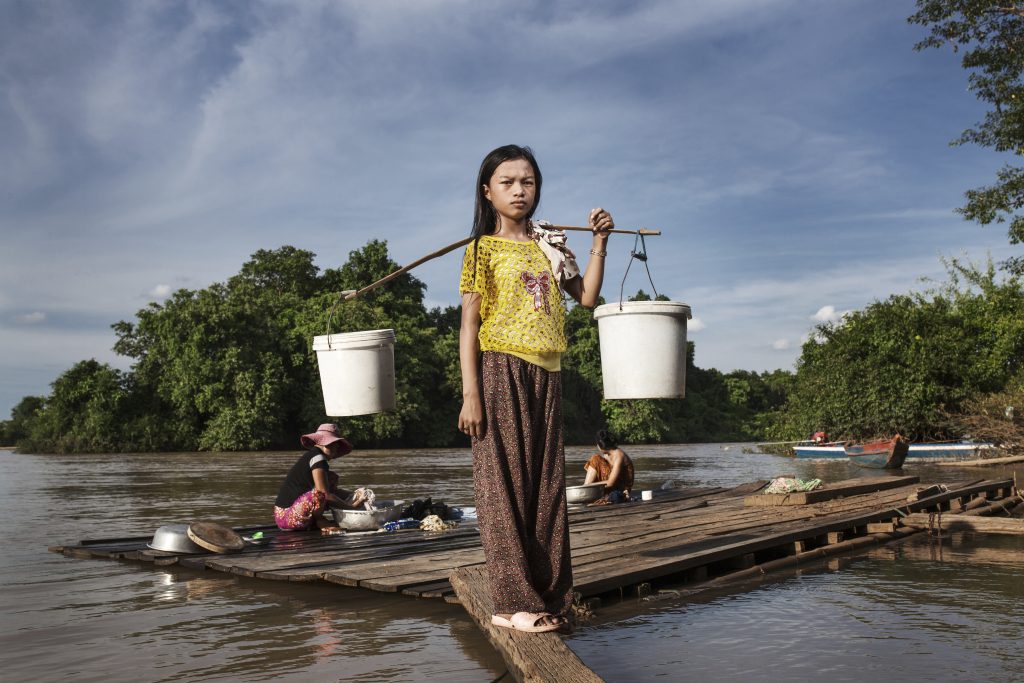
Marked with the LSS2 Label
It would be difficult to find a village that represents the changes wrought by the dam as well as Kbal Romeas does. Left with no choice, most of the 139 families living here have already agreed to abandon their homes and way of life to move into the designated area, under the constant pressures of both the local government and the LSS2 stakeholders.
The villagers were presented with two options; accept $6000 per family and re-build a house by themselves in the new land, or move into one of the small concrete houses with five hectares of land to farm.
“They say we’ll have electricity in the new relocation site, but like many other promises they’ve made, it’s just a rumour and no one has ever showed up with an official document to prove it,” says Keo Meap, the community leader of Kbal Romeas.
A few hundred metres away from Kbal Romeas stands the sacred forest of Kot Bou, and here the villagers are not so lucky. Most of the locals belong to the Phnong ethnic minority, animists who believe that non-human entities, such as animals, plants and inanimate objects possess a spiritual essence and that their guardian spirits reside in the forest, the burial ground of their ancestors.
“The company never warned us about the project. We weren’t offered any benefit like the people in the village,” says Mae Ton, a 64-year old woman who lives isolated with her sons in a green field surrounding the sacred forest.
“Here I have my fruit trees and my cows, but above all, this is where I have buried my ancestors. I’m not moving anywhere until the water rises up to my knees and perhaps, even then, I’ll stay here,” she says.
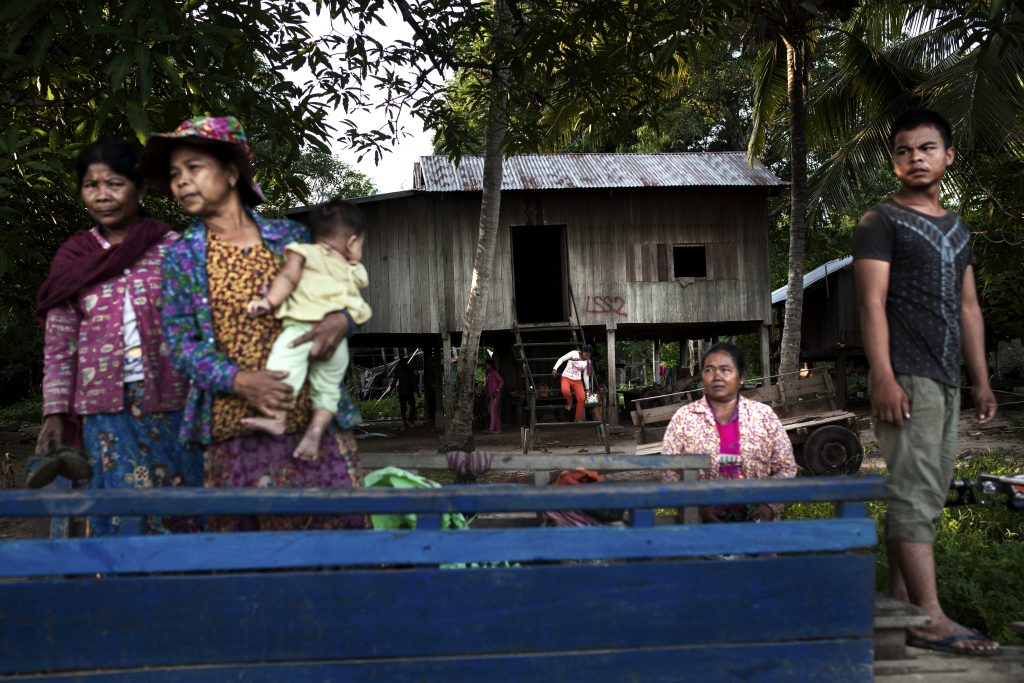
The Dam Keeps Rising
Meanwhile, a few kilometres downstream, the dam keeps rising, creating problems on both sides of its wall. If on the eastern side the reservoir threatens to flood forests and villages, on the western side the environmental impact is equally devastating.
Despite hosting only 12 families, the village of Phluk – located 11 kilometres downstream from the dam’s construction site – was once famous in the community for its fishing. Local fishermen were able to earn between US$15–25 per day selling fish to the town of Stung Treng. Now, because of the dam and the chemicals dissolved in the water, the amount of fish has dropped dramatically.
“The village is now very quiet and we no longer sell fish since there’s barely enough to feed ourselves. We only have buffaloes and chickens but with the deforestation going on around here it’s getting harder and harder. And if this wasn’t enough, it hasn’t rained much ever since the construction started. We are cursed!” says Bun Aeng, a former fisherman who now runs a small longtail boat service. His boats cut through a mangrove forest that runs between the village and the dam.
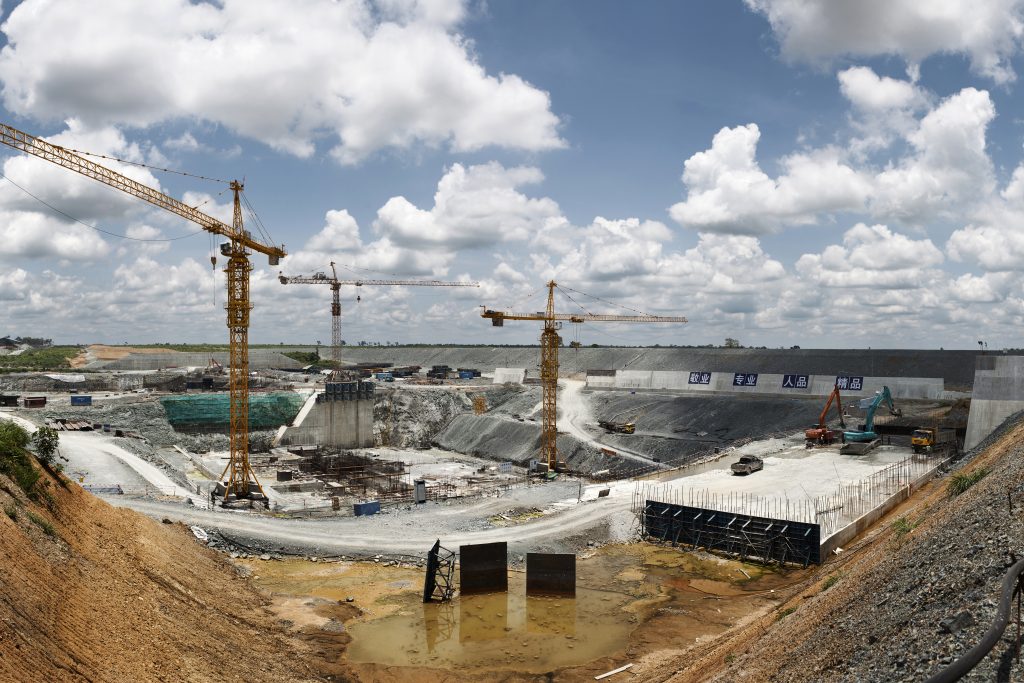
The Human Cost
Phluk is just a small example of what could happen on a larger environmental scale. A few kilometres north in the Laotian province of Champasak by the Cambodia-Laos border, the Don Sahong dam has just been approved. The environmental impact caused by the proximity of these two hydroelectric power plants will be catastrophic, with consequences that will be felt up to the Mekong delta in Vietnam.
With the threatened loss of most of the Mekong’s fisheries (because both dams will block fish migration routes) hundreds of thousands of Cambodians could feel the impact across the vast Mekong River Basin. The dam could take away a key source of protein in a country where many people depend on fishing.
Meanwhile in Kbal Romeas and neighbouring villages, relocation project officials have arrived – not to bring any documentation but to spray-paint trees and houses with a red sign: LSS2. A villager has started to dismantle his own house, piling up large planks of teak wood, waiting to rebuild everything from scratch in the new relocation site.
“People here have always been self-sufficient,” says Old Kong, the oldest of two monks living in the village. “Everybody built their own houses and farmed their own animals. They’re not used to money and they won’t know how to start over in the new place. They’re forcing us to leave and we eventually will, but just with our bodies. Our spirits are not ready…not yet”.
For more stories and photos, check out Asian Geographic Issue 117.



![The Road to Independence: Malaya’s Battle Against Communism [1948-1960]](https://asiangeo.com/wp-content/uploads/2021/07/WhatsApp-Image-2021-07-26-at-11.07.56-AM-218x150.jpeg)

